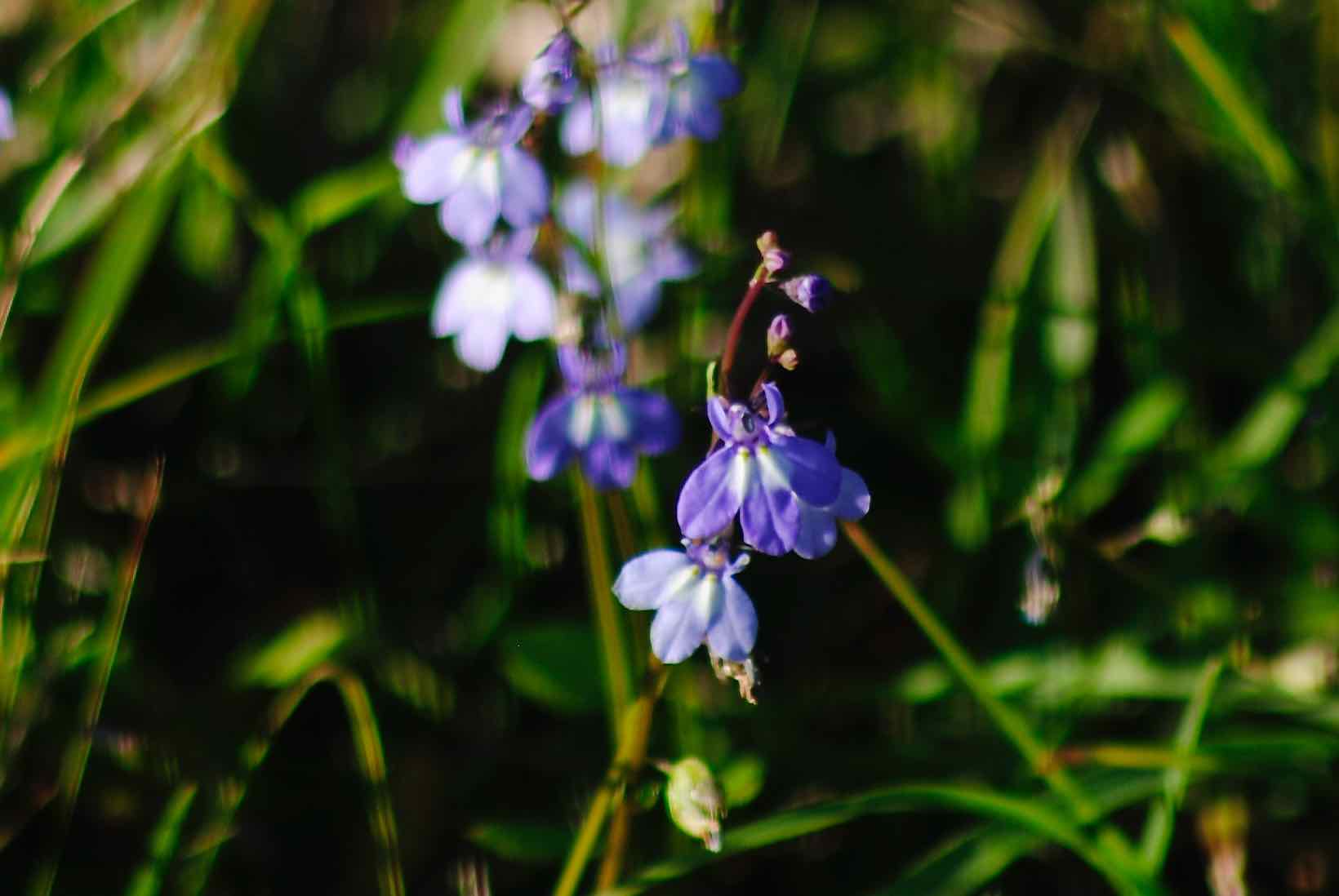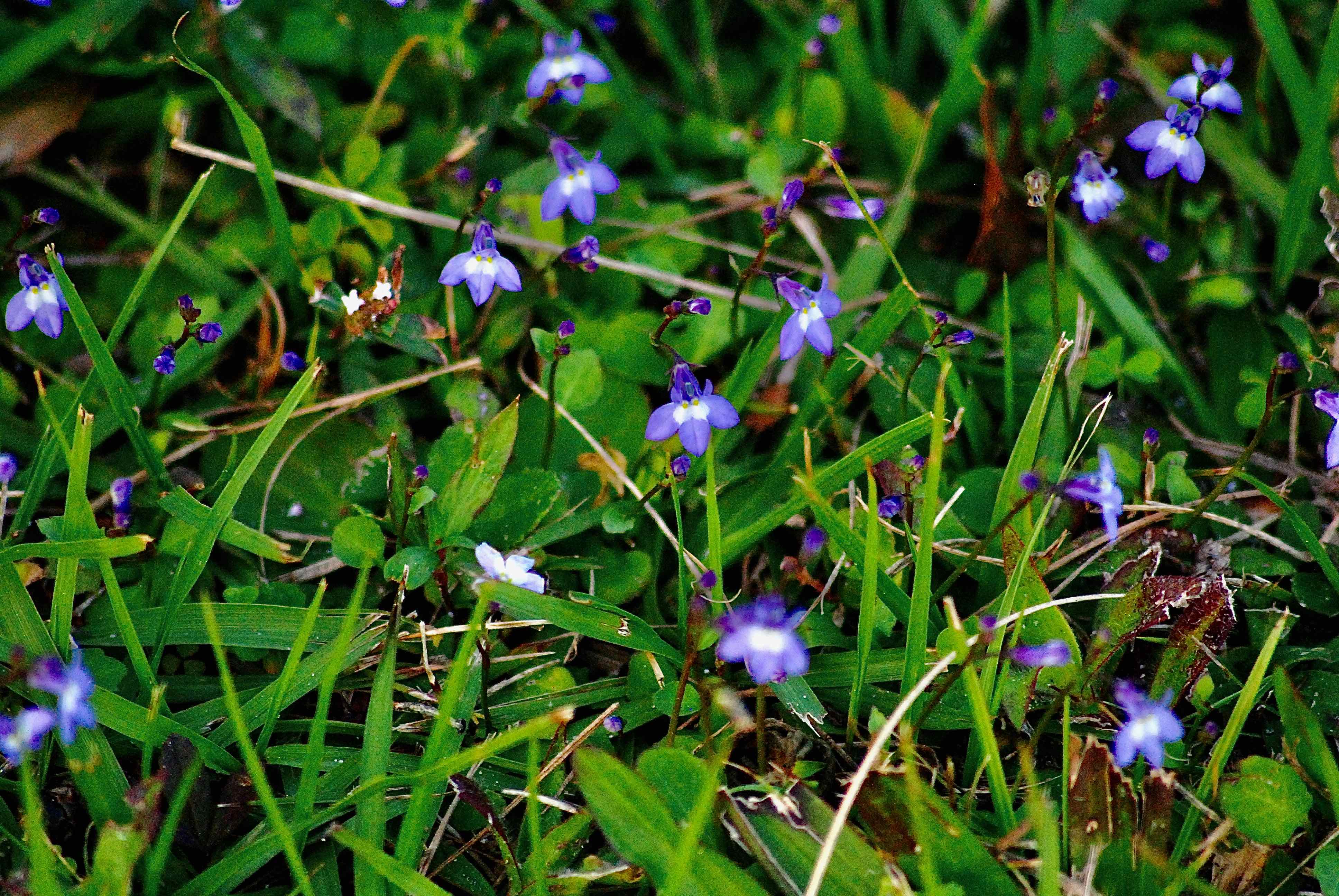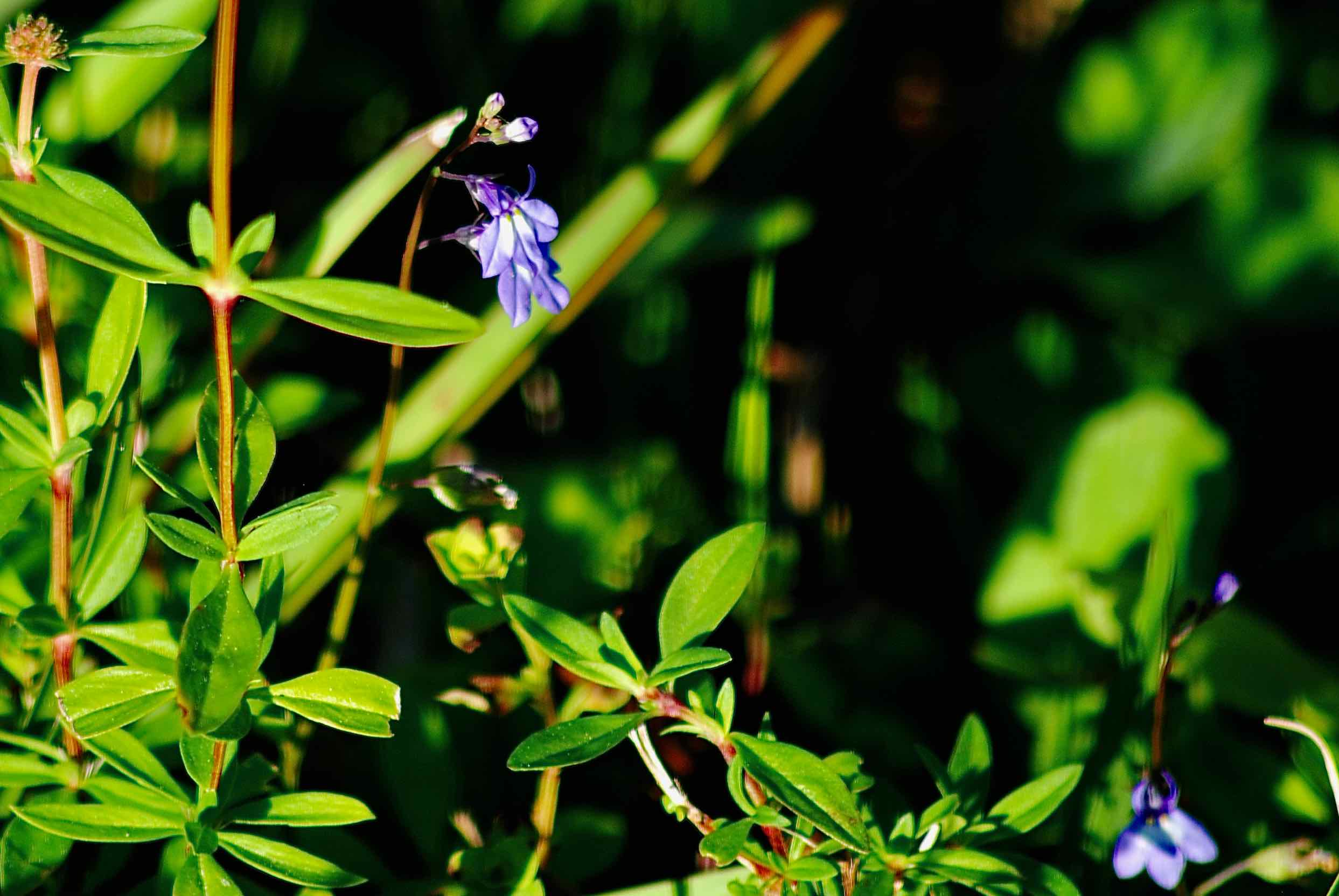
Bay lobelia, photographed at Riverbend County Park, Jupiter, Palm Beach County, in February 2015.
Bay lobelia, Lobelia feayana is the smallest of the three lobelias found in South Florida, but visually, it packs a punch far above its size.
It’s not only a Florida native, it’s a Florida endemic, meaning it’s only found within the bounds of the Sunshine State. Its range includes most of the Peninsula, with the exception of Monroe County. It’s been found in Miami-Dade County, but the Institute for Regional Conservation notes that it might not be native there.The IRC considers it imperiled in South Florida, but it is not listed as endangered or threatened by any government agency.
Bay lobelia favors moist, sunny habitats, including pinelands, but it’s commonly seen along roadsides, ditches and depressions. It is a perennial.
It stands six to 12 inches off the ground, but it can sprawl, making it useful as a ground cover in places with moist soils. We’ve seen it in areas of Riverbend County Park near Jupiter in northern Palm Beach County that are regularly mowed, growing only a few inches tall. It spreads via rhizomes, or underground stems, and can form large colonies. Leaves at the base are small, oval-shaped and scalloped along the edges.
Bay lobelia blooms primarily winter into summer, but can be seen flowering year-round. The blooms are small, a quarter-inch to a half-inch across, with five “bunny ear” petals. They vary in color from blue to lavender to almost pink. The two upper petals are thin and upright, sometimes bent back; the three lower petals are much wider, fused together and form a white “lip” where they join. Bees are the main pollinators.
Where bay lobelia grows en masse, the floral effect can be impressive; the Florida Wildflower Foundation says the collective blooms form a “blue haze.”
Bay lobelia can be confused with Canadian toadflax; the flowers are similar in color and shape. But toadflax grows in dry habitats, bay lobelia in moist.
Other members of the Lobelia genus have been used medicinally in Native American cultures, particularly L cardinalis. Our guy, apparently not at all. Or at least we couldn’t find any records of it being used.
The Lobelia name honors 17th-18th century Flemish doctor and botanist Mathias de Lobel, who also wrote a botany textbook.
Bay lobelia is a member of Campanulaceae, the bellflower family.
It’s not only a Florida native, it’s a Florida endemic, meaning it’s only found within the bounds of the Sunshine State. Its range includes most of the Peninsula, with the exception of Monroe County. It’s been found in Miami-Dade County, but the Institute for Regional Conservation notes that it might not be native there.The IRC considers it imperiled in South Florida, but it is not listed as endangered or threatened by any government agency.
Bay lobelia favors moist, sunny habitats, including pinelands, but it’s commonly seen along roadsides, ditches and depressions. It is a perennial.
It stands six to 12 inches off the ground, but it can sprawl, making it useful as a ground cover in places with moist soils. We’ve seen it in areas of Riverbend County Park near Jupiter in northern Palm Beach County that are regularly mowed, growing only a few inches tall. It spreads via rhizomes, or underground stems, and can form large colonies. Leaves at the base are small, oval-shaped and scalloped along the edges.
Bay lobelia blooms primarily winter into summer, but can be seen flowering year-round. The blooms are small, a quarter-inch to a half-inch across, with five “bunny ear” petals. They vary in color from blue to lavender to almost pink. The two upper petals are thin and upright, sometimes bent back; the three lower petals are much wider, fused together and form a white “lip” where they join. Bees are the main pollinators.
Where bay lobelia grows en masse, the floral effect can be impressive; the Florida Wildflower Foundation says the collective blooms form a “blue haze.”
Bay lobelia can be confused with Canadian toadflax; the flowers are similar in color and shape. But toadflax grows in dry habitats, bay lobelia in moist.
Other members of the Lobelia genus have been used medicinally in Native American cultures, particularly L cardinalis. Our guy, apparently not at all. Or at least we couldn’t find any records of it being used.
The Lobelia name honors 17th-18th century Flemish doctor and botanist Mathias de Lobel, who also wrote a botany textbook.
Bay lobelia is a member of Campanulaceae, the bellflower family.



